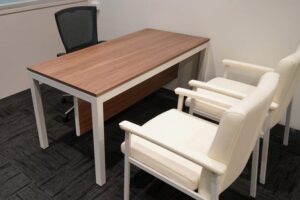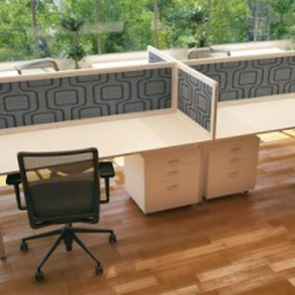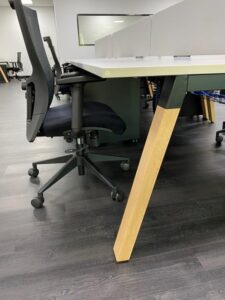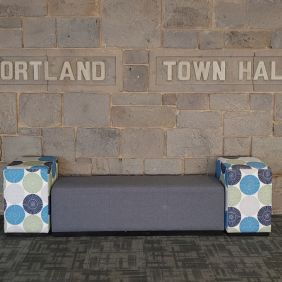
Working from home has become the new normal for many of us. Whether you have been doing it for years or are just starting out, creating a designated workspace is the key to maintaining productivity and avoiding distractions.
If you don’t have a dedicated room for an office, consider setting up a space in your living room, bedroom, or kitchen. The most important thing is to find a place where you can focus and avoid distractions.
Importance of Having a Designated Workspace at Home
There are several benefits to having a designated workspace, even if it’s just a small corner of your home. When you have a dedicated space for work, you’re more likely to be productive and focused. This is because your brain associates that space with work mode.
Another advantage of having a separate workspace is that it can help you to disconnect from work when you’re done for the day. When your work and living space are in the same place, it can be difficult to fully relax and unwind. Having a designated workspace will help you to leave work at work and enjoy your free time.
Over and above, having a specific space for your work also allows you to have some control over your environment. This is especially important if you share your living space with others. When you have your own workspace, you can make it as quiet or as loud as you need it to be, without disturbing others.
How to Create Your Designated Workspace
There are a number of things to consider when setting up your workspace, including ergonomics, lighting, and storage.
Ergonomics
When you’re setting up your workspace, it’s important to think about ergonomics. This refers to the study of how people interact with their environment. The goal of ergonomics is to reduce fatigue, discomfort, and injury.
environment. The goal of ergonomics is to reduce fatigue, discomfort, and injury.
Some of the key things to consider when it comes to ergonomics are:
- Chair height: Your chair should be at a height that allows your feet to rest flat on the floor and your knees to be at a 90-degree angle.
- Desk height: Your desk should be at a height that allows your elbows to rest at a 90-degree angle when you’re typing.
- Monitor position: Your monitor should be at eye level and about an arm’s length away from you.
- Keyboard and mouse placement: Your keyboard and mouse should be close to each other and within easy reach.
Lighting
Another important consideration for your workspace is lighting. Natural light is always best, but if you don’t have access to a window, make sure to set up some task lighting. This will help to reduce eye strain and fatigue.
Storage
When you’re setting up your workspace, it’s also important to think about storage. You’ll need somewhere to keep all of your work-related materials, such as files, documents, and books. If you don’t have a lot of space, consider using shelves or filing cabinets.
Designating a workspace in your home can have many benefits, including increased productivity and focus. When you’re setting up your workspace, make sure to consider ergonomics, lighting, and storage.
Tips for Setting up a Designated Home Workspace
Creating a comfortable and functional home office doesn’t have to be complicated or expensive. Here are a few tips to get you started:
Find a quiet spot
The first step is to find a quiet spot in your home where you can focus on work. If you don’t have a dedicated room for an office, consider setting up a space in your living room, bedroom, or kitchen. The most important thing is to find a place where you can focus and avoid distractions.
Make it comfortable
Once you’ve found the perfect spot, it’s time to make it comfortable. This means considering things like lighting, furniture, and storage. For example, if you don’t have a lot of space, a small desk and chair might be all you need. Or, if you want to splurge, you could invest in a comfortable office chair and standing desk.
example, if you don’t have a lot of space, a small desk and chair might be all you need. Or, if you want to splurge, you could invest in a comfortable office chair and standing desk.
Find the Ideal Furniture
No matter what size or shape your home office is you’ll need to find the right furniture and storage to make it work for you. Here are a few things to keep in mind:
- Desks: If you have a small space, consider a compact desk or a floating shelf that can serve as a desk. For a larger space, you might want a traditional desk with drawers for storage.
- Chairs: When choosing a chair, make sure it’s comfortable and adjustable. You’ll be spending a lot of time sitting, so it’s important to find a chair that supports your back and posture.
- Storage: Unless you have a lot of space, you’ll probably want to store most of your office supplies and materials away when you’re not using them. This might mean investing in a filing cabinet or some shelves.
Organize the Space
Once you’ve found the perfect furniture and storage for your home office, it’s time to start organizing. This means putting away any non-essential items and creating a system for your work materials. For example, you might want to create a filing system for important documents or set up a designated spot for your laptop and chargers.
Summary
Designating a workspace in your home can have many benefits, including increased productivity and focus. When you’re setting up your workspace, make sure to consider ergonomics, lighting, and storage. With a little bit of planning, you can create a comfortable and functional home office that will help you get the job done.
With the few tips that have been shared above, you should be able to create a designated workspace in your home with no problem. Creating a comfortable and functional home office doesn’t have to be complicated or expensive. All you need is to find a quiet spot in your house, make it comfortable and organized, then start working!









